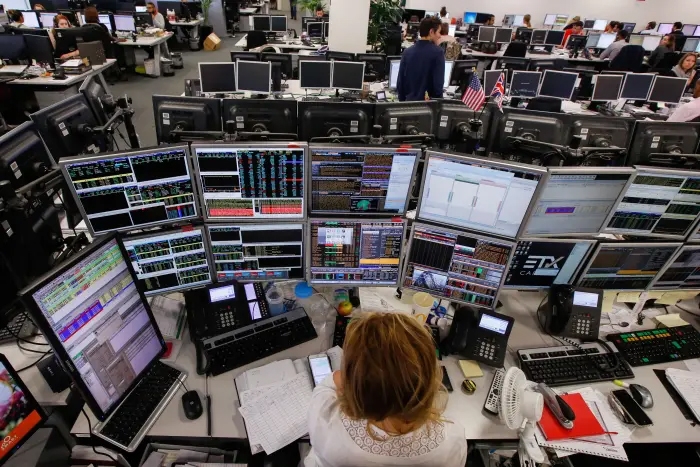
Reports of further cases of coronavirus have dominated headlines over the past 24 hours. Asian equity markets and global rates fell but US equities have rebounded over the past few hours and are now up on the day. Currency moves have been muted.
Market sentiment has been subdued over the past 24 hours following reports of the growing spread of coronavirus, a SARS-like virus. China has confirmed more than 300 cases of the virus, including six deaths, and there is the potential for further spread of the virus as people travel for Chinese New Year. While it is still early days, there is a risk that any outbreak could depress consumer sentiment and spending, including tourism.
Asian equity markets fell yesterday on the back of these reports, with the Hang Seng dropping 2.8% and the Shanghai Composite down 1.4%. The CNY fell 0.6%.
US equity futures also fell during Asian trading yesterday, but the moves have reversed over the past few hours. The S&P500 is now up marginally on the day, having been 0.5% lower at one point. The S&P500 is hovering around record highs. News that Trump and Macron had agreed not to levy tariffs on one another this year, as they negotiate around France’s contentious digital services tax, was one positive. The de-escalation in Europe-US trade tensions follows the signing of the US-China Phase-One trade deal and is another signal that Trump is prioritising the economy heading into the election. Netflix and IBM are among those corporates reporting after the bell today.
Despite the impressive resilience in US equities, global rates have fallen over the past 24 hours. The 10 year Treasury yield is 5bps lower than Friday night’s close (having been closed on Monday for Martin Luther King Day). Global rates have struggled to bounce over the past few hours, even as US equities have rebounded.
There hasn’t been any US data overnight, but European and UK data has been stronger. The German ZEW survey of forward-looking expectations increased significantly to 26.7, its highest level since 2015. At face value, this bodes well for an improvement in European growth, although the ZEW surveys analysts rather than businesses and it can have a patchy relationship with GDP. In the UK, employment growth was much higher than expected, leaving the unemployment rate at its lowest level since the mid-1970s. The market pared back its probability of a BoE rate cut next week to 60%, from 70% previously.
Currency moves have been subdued. The GBP is the best performing currency, following the upside surprise to the UK labour market data, and is 0.3% higher at 1.3050. The JPY has also outperformed amidst the risk-off backdrop (at least, as reflected by Treasury yields) with USD/JPY trading back below 110 (-0.2%). There was no market reaction to the BoJ meeting yesterday in which it kept policy unchanged and said it would ease if needed. The EUR reversed earlier gains it made after the upside surprise to the ZEW and is back to unchanged on the day, just below 1.11.
The AUD has fallen 0.3% over the past 24 hours to 0.6850. The underperformance of the AUD may be related to concerns that the Australian economy is vulnerable to further spread in the coronavirus, given the close economic relationship with China. One man was placed in quarantine in Brisbane yesterday, after recently returning from Wuhan, although health authorities later said he wasn’t a risk to the public. The move in the AUD is still small in magnitude.
The NZD is unchanged overnight, having traded a very narrow 0.6588 – 0.6615 range. The Global Dairy Trade auction overnight revealed a 1.7% increase in dairy prices, towards the upper-end of the 0-2% range we were looking for. Whole milk powder prices were up 2.4%. The recent strengthening in the CNY (which improves the purchasing power of Chinese buyers), dry conditions in NZ (restricting milk production) and firmer international grain prices have all been supportive factors for dairy prices of late. The NZD/AUD cross has pushed up to 0.9640.
In domestic data, the PSI (the services equivalent of the PMI) released yesterday was disappointing, falling to its lowest level since 2012. At 51.9, the PSI now stands well below its long term average of 54.4. The PSI and last week’s PMI point to a still-subdued pace of growth, although the improvement in forward-looking activity measures in recent business surveys suggests a slightly more optimistic outlook. There wasn’t any reaction to the release, with the market focused instead on CPI which is released on Friday. NZ rates ticked up by 1bp to 2bps yesterday as the market continued to gradually pare back its easing expectations. The market prices slightly less than a 40% chance of an OCR cut this year.

We welcome your comments below. If you are not already registered, please register to comment
Remember we welcome robust, respectful and insightful debate. We don't welcome abusive or defamatory comments and will de-register those repeatedly making such comments. Our current comment policy is here.